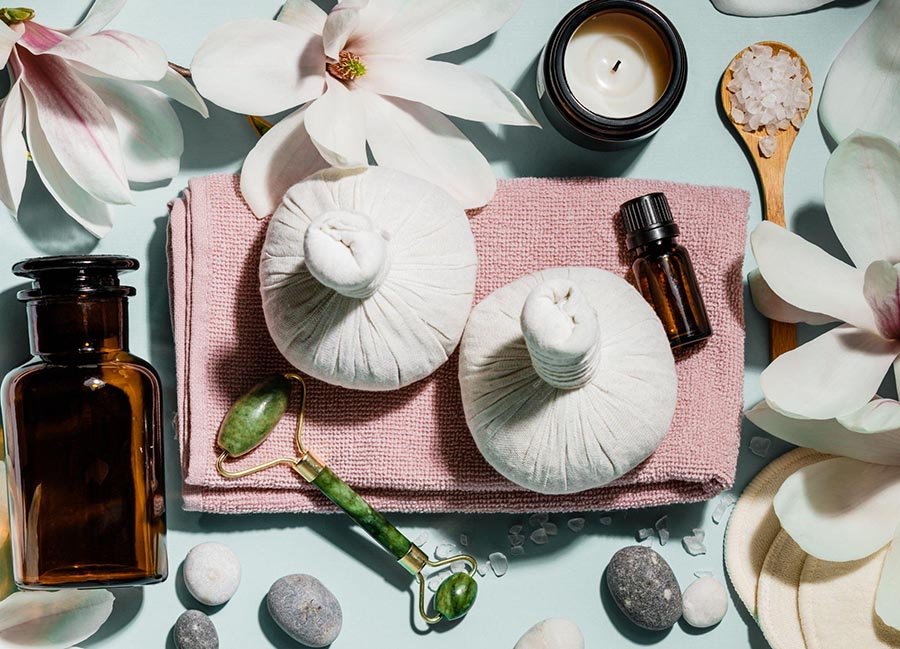Facial oils have been used for centuries to moisturize and nourish the skin. They are becoming increasingly popular in the beauty industry, and for good reason. Facial oils are a great addition to any skincare routine as they offer numerous benefits that can improve the overall health and appearance of your skin. In this article, we will discuss the benefits of using a facial oil in your skincare routine.
What is Facial Oil?
Facial oil is a natural plant-based oil that is extracted from various nuts, seeds, and fruits. It is a concentrated liquid that contains a high amount of nutrients, vitamins, and fatty acids. Facial oils are non-comedogenic, meaning they do not clog pores, making them suitable for all skin types.
Benefits of Facial Oil
- Moisturizing
Facial oils are excellent moisturizers, especially for dry and dehydrated skin. They contain natural fatty acids that can penetrate deep into the skin, hydrating it from within. Regular use of facial oils can leave your skin feeling soft, supple, and well-hydrated.
- Nourishing
Facial oils are rich in nutrients that can nourish the skin. They contain vitamins A, C, and E, which are essential for skin health. These vitamins help to repair damaged skin, reduce inflammation, and protect the skin from environmental damage. Facial oils also contain antioxidants that can fight free radicals and prevent premature aging.
- Anti-Aging
Facial oils are a great anti-aging treatment. They contain high levels of antioxidants and fatty acids that can help to reduce fine lines, wrinkles, and other signs of aging. Regular use of facial oils can improve skin elasticity, firmness, and overall skin texture.
- Non-Comedogenic
Facial oils are non-comedogenic, meaning they do not clog pores. This makes them suitable for all skin types, including oily and acne-prone skin. They can help to balance the skin’s natural oil production, which can prevent breakouts and other skin irritations.
- Brightening
Facial oils can brighten the skin and even out skin tone. They contain natural ingredients that can reduce dark spots, hyperpigmentation, and other discolorations. Regular use of facial oils can result in a brighter, more radiant complexion.
How to Use Facial Oil
Facial oil should be used after cleansing and toning the skin. It is recommended to apply facial oil when the skin is still slightly damp, as this helps to lock in moisture. Simply apply a few drops of facial oil to the palms of your hands and gently massage it into your face and neck. You can also mix facial oil with your moisturizer for added hydration.
Types of Facial Oils
There are various types of facial oils available in the market. Here are some of the most popular ones:
- Argan Oil
Argan oil is extracted from the nuts of the Argan tree found in Morocco. It is rich in vitamin E and fatty acids, making it an excellent moisturizer for dry and aging skin.
- Jojoba Oil
Jojoba oil is extracted from the seeds of the Jojoba plant. It is similar to the natural oils produced by the skin, making it an ideal moisturizer for all skin types. Jojoba oil is also rich in antioxidants, making it an effective anti-aging treatment.
- Rosehip Oil
Rosehip oil is extracted from the seeds of the rosehip fruit. It is rich in vitamin A, C, and fatty acids, making it an excellent anti-aging treatment. Rosehip oil can also brighten the skin and reduce discolorations.
- Marula Oil
Marula oil is extracted from the nuts of the Marula tree found in Africa. It is rich in antioxidants, fatty acids, and vitamins C and E, making it a great moisturizer and anti-aging treatment. It is also effective in reducing inflammation and redness in the skin.
- Coconut Oil
Coconut oil is extracted from the meat of the coconut. It is rich in lauric acid, which has antimicrobial properties that can help to prevent acne and other skin infections. Coconut oil is also an excellent moisturizer for dry and dehydrated skin.
- Squalane Oil
Squalane oil is a lightweight oil that is similar to the natural oils produced by the skin. It is easily absorbed by the skin, making it an excellent moisturizer for all skin types. Squalane oil is also effective in reducing fine lines and wrinkles.
- Tamanu Oil
Tamanu oil is extracted from the nuts of the Tamanu tree found in the South Pacific. It is rich in fatty acids and antioxidants, making it an excellent moisturizer and anti-aging treatment. Tamanu oil is also effective in reducing inflammation and promoting wound healing.
Nihon Skin is a Malaysian brand that specializes in creating high-quality facial oils. Their products are made using natural and organic ingredients and are suitable for all skin types. Nihon Skin’s facial oils offer numerous benefits, including hydration, nourishment, and anti-aging properties, making them a great addition to any skincare routine.
Conclusion
Facial oils are a great addition to any skincare routine. They offer numerous benefits, including moisturizing, nourishing, anti-aging, non-comedogenic, and brightening. There are various types of facial oils available, each with their own unique properties. It is important to choose a facial oil that is suitable for your skin type and needs. Regular use of facial oil can improve the overall health and appearance of your skin, leaving it soft, supple, and radiant.
















